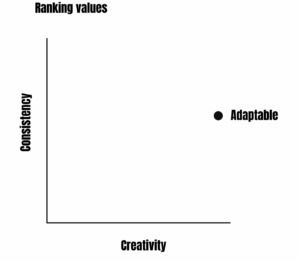February 3, 2023 / Esther Choy
 For some time now, storytelling has been understood as a powerful leadership tool. There are many business storytelling books out there. Most of them describe storytelling as a strategy to provide information in a quick and memorable way. As neuroscientist Paul Zak’s studies have demonstrated, stories give audiences “better understanding of the key points a speaker wishes to make and enable better recall of these points weeks later.”
For some time now, storytelling has been understood as a powerful leadership tool. There are many business storytelling books out there. Most of them describe storytelling as a strategy to provide information in a quick and memorable way. As neuroscientist Paul Zak’s studies have demonstrated, stories give audiences “better understanding of the key points a speaker wishes to make and enable better recall of these points weeks later.”
However, storytelling has the potential to have an even greater impact. Since COVID, we have seen an increasing appetite for personal narratives and for taking a human-centered approach to organizational structures. As the popularity of Brene Brown’s leadership text Daring Greatly bears witness to: human connection is a vital ingredient for personal and professional thriving. Brown explains, “Connection is why we’re here… it’s what gives purpose and meaning to our lives.”
It is a culture of storytelling that can drive this kind of connection that focuses on purpose and meaning. When I was writing my business storytelling book Let The Story Do The Work, I found inspiration in the following three books, even though they are not obviously business storytelling books. They helped me understand why stories empower people to connect, speak up, and think creatively even before storytelling was even considered a leadership tool. The three books on this must-read list are for leaders who want to understand the full potential of creating a storytelling culture. You will walk away with a firm understanding of why storytelling is a game changer for any organization.
The authors show how stories not only enable us to share information in a memorable way, but drive meaningful connections. Read together, these titles form a foundation for understanding how narratives help us see ourselves more clearly, connect to others authentically, and convey information in a meaningful and memorable way.
These business storytelling books may not be available at your local brick-and-mortar bookstore, but they are all available on the second-hand market. If you are interested in the power of leadership storytelling and creating a culture of storytelling at your organization, add them to your must-read list today.
Career Counseling: A Narrative Approach by Larry Cochran (SAGE Publishing, 1997)
Larry Cochran’s academic publication Career Counseling: A Narrative Approach opened the doors for thinking about how the stories we tell about ourselves shape our career choices. This book effectively linked the power of narrative-making to the business world. Understanding how stories help us see and know ourselves will empower you to tell stories that create workplace connection and cohesion.
Cochran’s theory moved the field of career counseling beyond assessments and personality tests, by getting people to dig deeper to understand themselves through storytelling. With narrative-building tools, Cochran argues, people are able to investigate and understand the hidden web of influences that are shaping them into the people they are becoming. Without these narratives, we too often rely on cliches or what we’ve heard others say before to make sense of our own trajectories. Narratives can help us reflect on and understand our own intrapersonal choices. Though writing to an audience of career counselors, the frameworks are applicable to other areas of business leadership and intrapersonal awareness.
Why did I choose this path when I spent years studying something else? As their new manager, how should my team be prepared to work with me? What is one thing I want everyone to know about me, personally and professionally? These types of questions are the ones that everyone around us wants to know, but no one asks. Being able to craft a story about your own career journey — and help others on your team to do so too — will help jumpstart the process of connecting with one another and creating cohesion within any team.
Try this: Use the I-R-S storytelling tool to create a story to answer the question: What is an experience you’ve had — not necessarily related to your career — that has influenced the way you think about your job?
Tell Me a Story: Narrative and Intelligence by Roger Schank (Northwestern University Press, 1995)
With OpenAI’s release of their new chatbot that can answer almost any question, artificial intelligence technology is in the headlines again. This groundbreaking tool is likely indebted to one of the pioneers in AI research, Roger Schank. While he may seem like an unlikely source to turn to for learning about storytelling, in 1995 he wrote a trailblazing text called Tell Me a Story: Narrative and Intelligence. In this book, Dr. Schank explores how narratives reflect our collective intelligence and how they influence how we interact with others.
While arguing that artificial intelligence must be based on real human intelligence, Schank reveals how humans are hardwired to connect through and store information in stories. For example, humans “index” stories to create relationships. When you hear a story about someone making an embarrassing mistake during their first day at a new job, you create connections to your own similarly indexed stories, which contain similar elements even if not the same exact material. The key ideas of embarrassing mistakes, first day at work, the desire to make a positive impression, may make you recall your first day of high school or the time you witnessed a colleague’s faux pas during orientation. These indexed connections create empathy and strengthen relationships.
Dr. Schank’s insights into human relationships, interaction, and collective intelligence are remarkable and help business leaders understand why it’s so important to be able to tell effective stories to create cohesive organizations and connections between colleagues. Adding on to Cochran’s research, Schank demonstrates not only how stories serve to help us understand ourselves, but to be in relationship with others, helping us to understand each other, to persuade, and make decisions together.
Try this: As a team building exercise, play “Story Bingo.” Create bingo cards with numbered squares — one square for each member on the team. Each person will be assigned a number. In a random order, each person will share a personal story they’ve prepared ahead of time. If the story makes you recall your own similar experience you can cover the number square belonging to that team member. This is a great exercise to practice aggressive listening too. The first person to cover all the squares wins.

How To Be Interesting: In 10 Simple Steps by Jessica Hagy (Workman Publishing, 2013)
In the book How To Be Interesting, award-winning artist and writer Jessica Hagy reveals the power of simple lines, circles, and captions to convey an abundance of meaning. This book compels the reader to have fun, be creative, and to express their ideas visually. Though adding a drawing into your conversation is a deceptively simple communication strategy, the impact can be huge. A simple hand-drawn Venn diagram becomes an invitation to participate in the conversation—stimulating new ideas and questions.
With a concrete illustration of your idea, you invite your listeners to use more of their brain. They are not only taking in your words and tone of voice, they are now using the part of the brain that processes visual information. Just like our brains are hardwired for storytelling, neuroscientists have found humans can process entire images, and their meanings, in as little as 13 milliseconds.
Stories and simple visuals are “sticky.” We remember them. With the right story and the right visuals, business leaders can convey memorable information and meaning to their audiences in just a matter of moments.
Try this: Draw a visual representation of your company culture. Here are a few examples to get your juices flowing.

Valuing Creativity vs. Consistency

We use this drawing frequently to illustrate Leadership Story Lab’s personality.
—
With the ideas found in these three texts, you will learn why storytelling is an incredible tool for empowering your team to connect, speak up, and think creatively. But you don’t have to take my word for it. Dig deeper into leadership storytelling through practice and reading other business storytelling books, such as the ones on this list for innovators, entrepreneurs, and leaders.
Better Every Story
Leadership Transformation through Storytelling
"This is an amazing and insightful post! I hadn’t thought of that so you broadened my perspective. I always appreciate your insight!" - Dan B.
Get Esther Choy’s insights, best practices and examples of great storytelling to your inbox each month.




